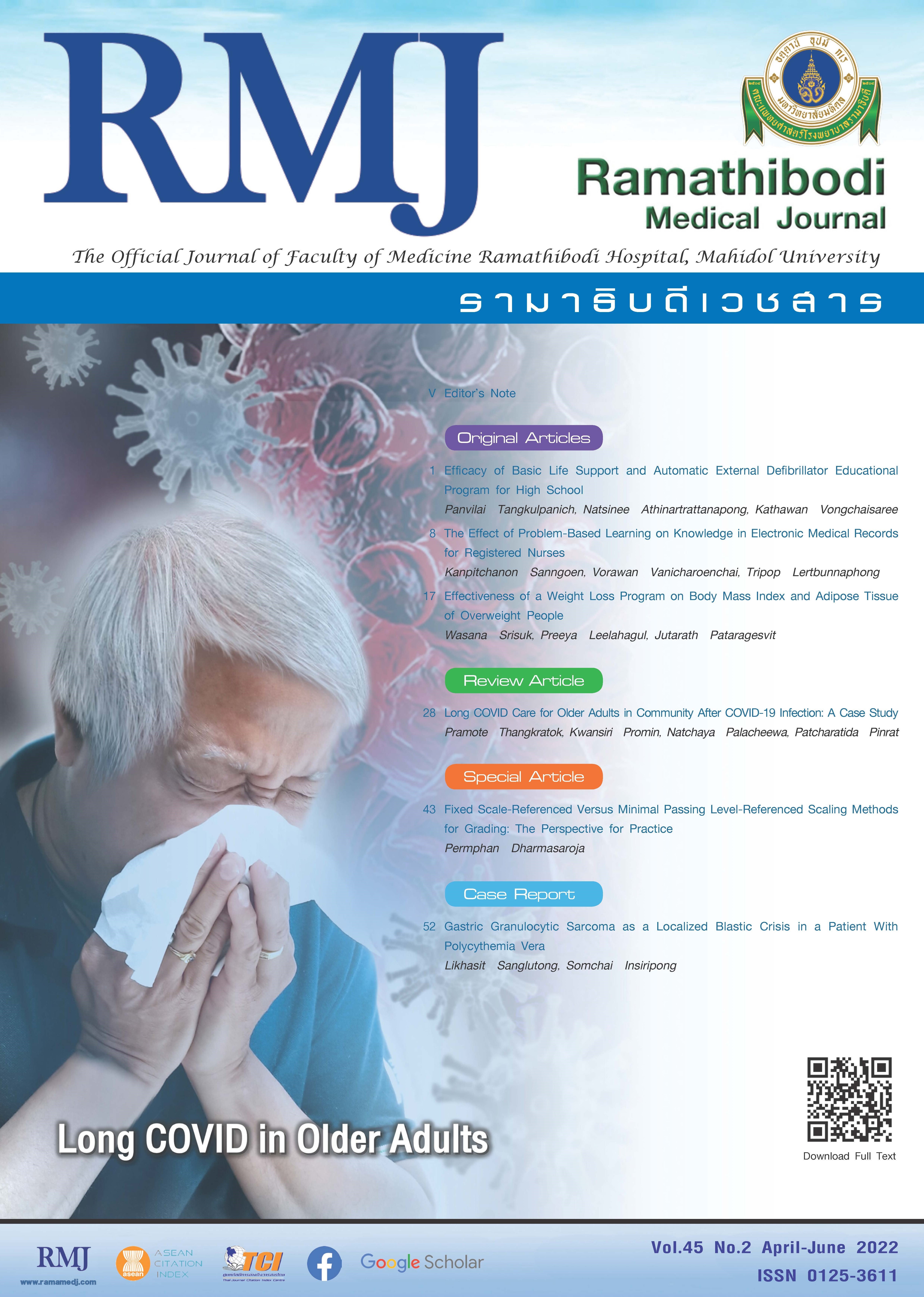Efficacy of Basic Life Support and Automatic External Defibrillator Educational Program for High School
DOI:
https://doi.org/10.33165/rmj.2022.45.2.243657Keywords:
Automatic external defibrillator, Basic life support, High school, Emergency medicineAbstract
Background: Bystander-initiated cardiopulmonary resuscitation (CPR), the automatic external defibrillator (AED), and rapid activation of emergency medical service have major roles in the chain of survival of out-of-hospital cardiac arrest patients. To integrate the basic life support (BLS) knowledge into the high school curriculum, teachers are the key person.
Objective: To examine the effectiveness of the BLS training program for high school teachers.
Methods: In this prospective study of 146 participants, before and immediately after 2 hours lecture and 3 hours hands-on activity of BLS training program consisting of instruction on CPR, AED, and first aid for foreign body aspiration, written tests were done to assess knowledge while participants’ attitudes were evaluated by a questionnaire survey.
Results: A total of 146 participants, BLS knowledge increased in all parts (early activation, chest compression, and defibrillation increased by 27.3%, 51.3%, and 82.1% with adjusted OR 13.81, 19.08, and 849.47, respectively; P < .001), as well as participant’s confidence increased from 47.6% to 95.8% (adjusted OR, 31.69; P < .001).
Conclusions: BLS training in high school teachers increased both knowledge of chains of survival and confidence.
References
World Health Organization. The top 10 causes of death. December 9, 2020. Accessed February 2, 2022. https://www.who.int/news-room/fact-sheets/detail/the-top-10-causes-of-death
Boyce LW, Vliet Vlieland TP, Bosch J, et al. High survival rate of 43% in out-of-hospital cardiac arrest patients in an optimised chain of survival. Neth Heart J. 2015;23(1):20-25. doi:10.1007/s12471-014-0617-x
Blom MT, Beesems SG, Homma PC, et al. Improved survival after out-of-hospital cardiac arrest and use of automated external defibrillators. Circulation. 2014;130(21):1868-1875. doi:10.1161/CIRCULATIONAHA.114.010905
Yeeheng U. Factors associated with successful resuscitation of out-of-hospital cardiac arrest at Rajavithi Hospital’s Narenthorn Emergency Medical Service Center, Thailand. Asia Pac J Public Health. 2011;23(4):601-607. doi:10.1177/1010539511411902
American Heart Association. 2015 AHA Guidelines update for CPR and ECC. Circulation. 2015;132(18 suppl 2):S315-S589. Accessed February 2, 2022. https://www.cercp.org/wp-content/uploads/2015/10/Guidelines-RCP-AHA-2015-Full.pdf
American Heart Association. Part 3: Adult Basic Life Support. Circulation. 2000;102(suppl 1):I-22-I-59. doi:10.1161/circ.102.suppl_1.I-22
Hirose T, Iwami T, Ogura H, et al. Effectiveness of a simplified cardiopulmonary resuscitation training program for the non-medical staff of a university hospital. Scand J Trauma Resusc Emerg Med. 2014;22:31. doi:10.1186/1757-7241-22-31
Downloads
Published
How to Cite
Issue
Section
License
Copyright (c) 2022 Ramathibodi Medical Journal

This work is licensed under a Creative Commons Attribution-NonCommercial-NoDerivatives 4.0 International License.

















